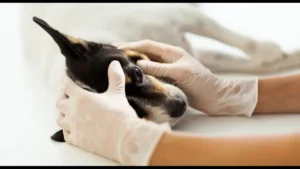Obesity in dogs is becoming an increasing problem, as is the human obesity crisis in many parts of the world. This disease is not only associated with being overweight; it is a complex health problem that can have a significant impact on your dog’s health, quality of life and longevity. For responsible pet owners who want to keep their furry friends happy and healthy, it’s important to fully understand how fat affects a dog’s health.
1. How Big is the Problem:
A dog is considered obese if its weight is 20% or more above its normal weight. This problem occurs in dogs of all ages, breeds and backgrounds, but is more common in certain breeds and older dogs. There are many reasons why dogs can be overweight, including eating too much, not getting enough exercise, genetics and sometimes deeper health problems.
2. Health Problems Caused by Obesity:
When a dog is overweight, this can have a huge impact on his health. A dog’s extra weight puts extra strain on almost all body processes, which can lead to a host of health problems.
- Joint Pain and Movement Problems
One of the most obvious effects of fat on dogs is on the musculoskeletal system. Extra weight can put more strain on your joints, leading to pain, limited mobility and conditions such as arthritis. Overweight dogs may find it difficult to do things they used to enjoy, such as walking, running or climbing stairs.
- Respiratory and Circulatory Stress
When a dog is overweight, its respiratory and circulatory systems work less effectively. If your dog has fat on his chest and abdomen, he may have trouble breathing, especially during exercise or when it’s hot outside. Heart disease occurs because the heart has to work harder to pump blood through excess body fat.
- Increased Risk of Diabetes
Just like in humans, being overweight or obese in dogs is a major risk factor for diabetes. Too much fat makes it harder for the body to use insulin properly, which can lead to high blood sugar and eventually diabetes. People with diabetes must take insulin injections for the rest of their lives, visit the vet regularly and follow a strict diet.
- Liver Health
Being overweight can lead to hepatic lipidosis, a disease in which fat builds up in the liver. This causes the liver to work less efficiently, which is detrimental to your dog’s digestion and overall health.
- Shortened Life Expectancy
The saddest thing about being overweight in a dog is that it shortens its lifespan. Research shows that obesity can significantly shorten a dog’s lifespan. This means owners lose valuable time with their beloved pets. Furthermore, the health problems associated with being overweight can have a significant impact on quality of life in the short term.
3. How to Prevent and Tackle Problems:
The good news is that most dogs can avoid gaining too much weight, and if they do become overweight, it can be managed with the right methods.
- Proper Nutrition
The first thing you can do to prevent your dog from gaining weight is to feed him a reasonably balanced, healthy diet. If you want to spoil your dog, don’t give him too many treats or human food, as these often contain a lot of calories.
- Regular Exercise
To ensure your dog maintains a healthy weight, he needs regular, safe exercise. What and how much activity your dog needs depends on its breed, age and health. Talk to your vet about developing a training plan that works for your dog.
- Checkups with Your Vet
Taking your pet to the vet for regular checkups can help you catch weight gain early, making it easier to manage. Your vet can also give you specific advice on what to feed and how to exercise your dog, based on his needs.
- Education and Awareness
It is important to educate yourself and your family about the dangers of obesity and the importance of your dog living a healthy life. Knowing proper portion sizes, dog food nutritional content, and the signs of obesity can help you make better decisions about your pet’s health.
4. Summary:
It is possible to prevent dogs from becoming overweight, which is detrimental to their health, well-being and lifestyle. Dog owners can ensure their pets live healthier, more active lives by educating themselves about the consequences of obesity and taking action to prevent or control it. Following a good diet, regular exercise and ongoing veterinary care are the best ways to combat obesity and the health problems that come with it. This way, our dogs can stay healthy and happy for years to come.
FAQs:
Q. What defines obesity in dogs?
Obesity in dogs is generally defined as 20% or more above their ideal body weight. This condition can lead to a range of health problems and seriously affect the quality and longevity of the dog.
Q. What are the main health risks associated with obesity in dogs?
Major health risks for obese dogs include joint and mobility problems, such as arthritis; respiratory and cardiovascular stress; an increased risk of diabetes; liver health problems; and an overall decrease in life expectancy and quality of life.
Q. Can obesity in dogs lead to diabetes?
Yes, obesity is a major risk factor for diabetes in dogs. Excess fat impairs the body’s ability to use insulin properly, causing elevated blood sugar levels and ultimately diabetes, which requires lifelong treatment.
Q. How can I prevent my dog from becoming obese?
To prevent obesity in dogs, feed them a balanced diet with appropriate portion sizes, ensure they get regular and adequate exercise and avoid overfeeding or too many treats. Regular health checks with your vet are also crucial for monitoring your dog’s weight and overall health.
Q. Is obesity in dogs reversible? How do I check?
Yes, obesity in dogs can be largely controlled with the right approach, including adjusting diet to reduce calorie intake, increasing physical activity and closely monitoring weight. It’s important to work with your veterinarian to develop a safe and effective weight loss plan tailored to your dog’s specific needs.



